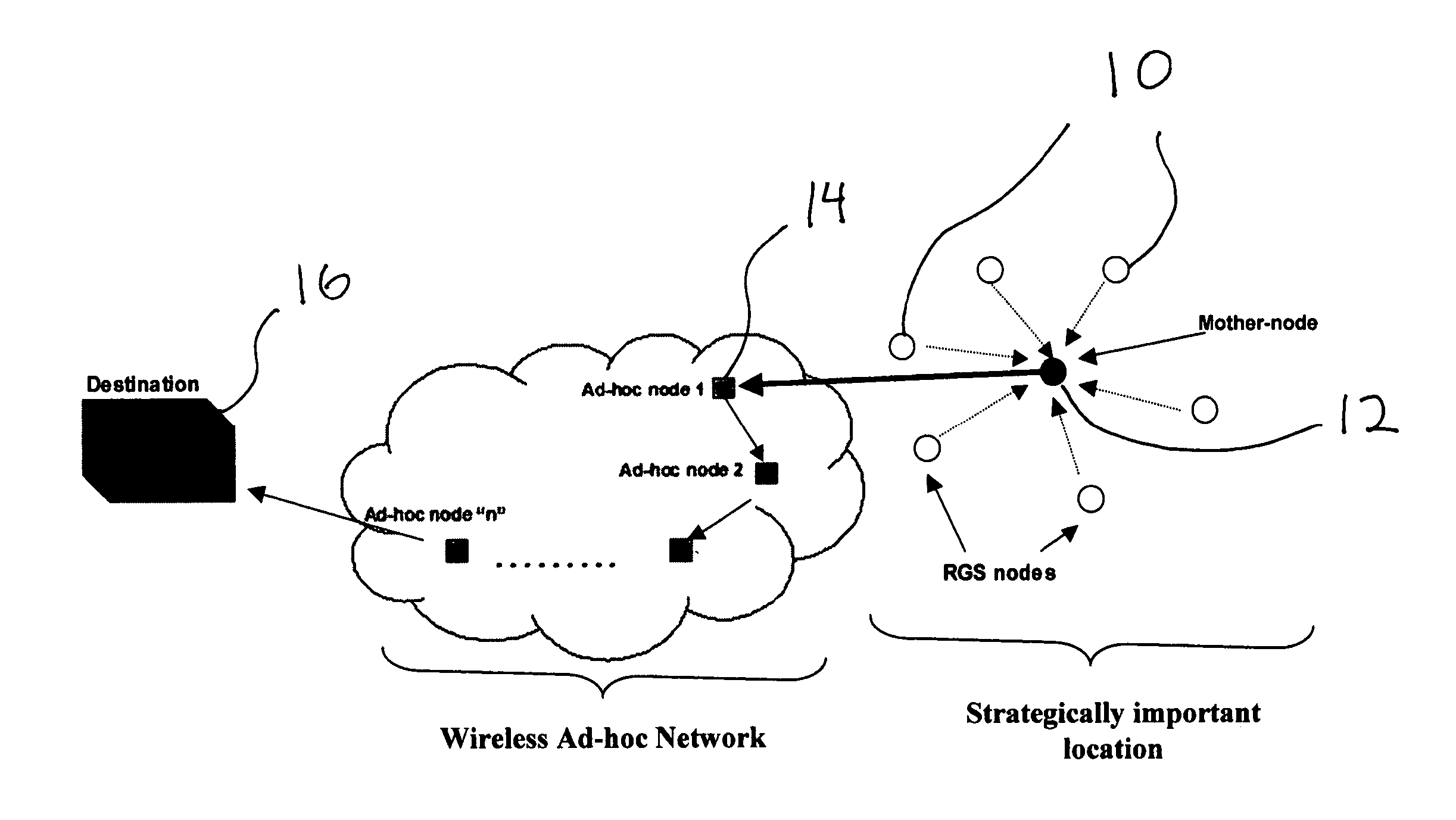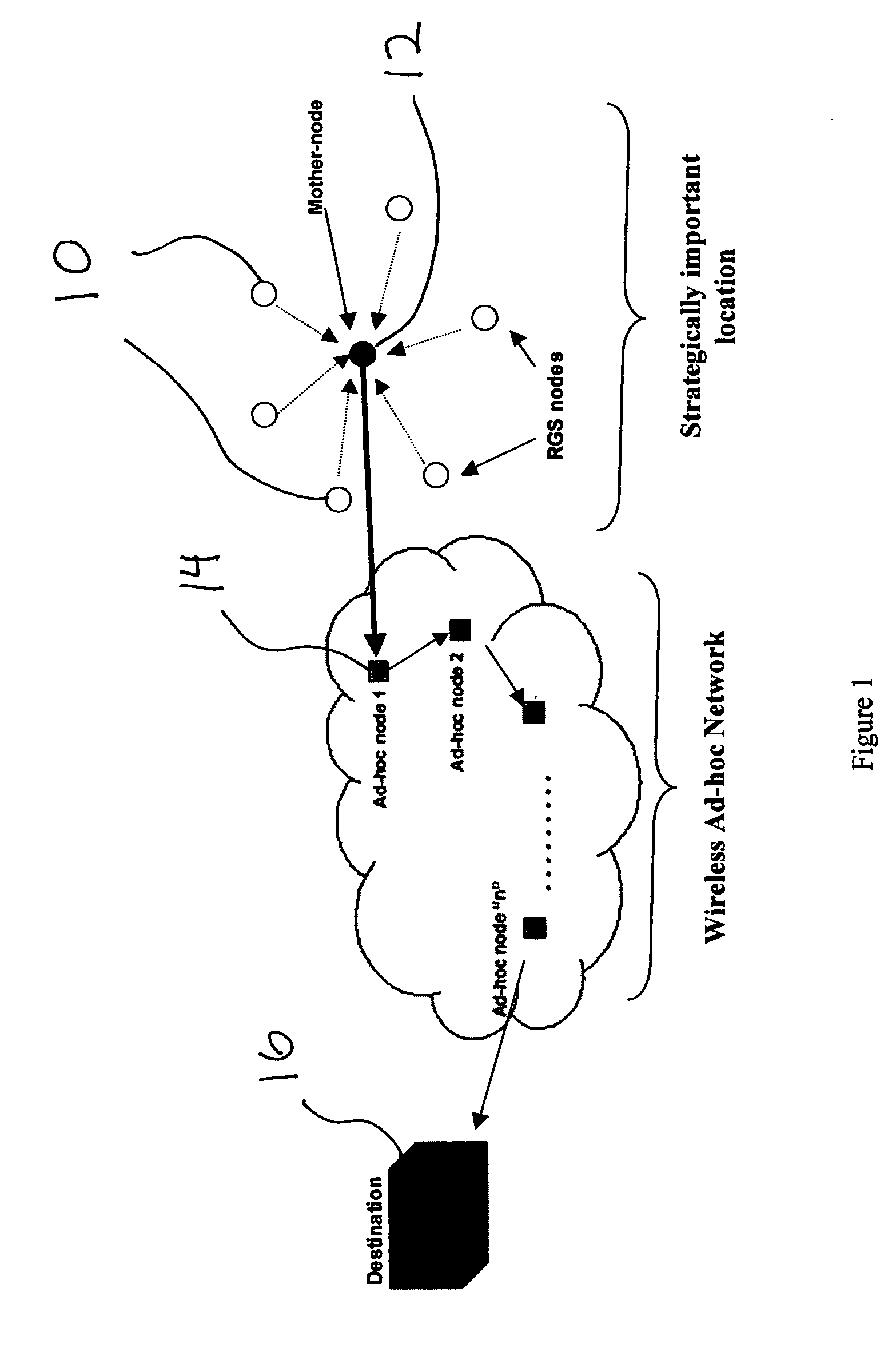Ultra-wideband radar sensors and networks
a technology of ultra-wideband radar and sensors, applied in the field of ultra-wideband radar technology, can solve the problems of fewer perimeter security systems, unable to determine the majority of current systems, and current technology does not permit a reliable target discrimination method, etc., to achieve the effect of small battery and continuous and reliable operation
- Summary
- Abstract
- Description
- Claims
- Application Information
AI Technical Summary
Benefits of technology
Problems solved by technology
Method used
Image
Examples
Embodiment Construction
[0034] An embodiment of the present invention is a low power UWB wireless sensor network that can be placed in a strategically important area to constantly monitor the data of interest and relay the information to a destination far from the source using wireless ad-hoc networks. This strategic sensor network uses radar sensors, described below, at each node that examine radar signal reflections at a fixed range and give an alarm if there is a significant differential movement at that range. UWB signals used in these sensor nodes have an inherent immunity to multipath phenomenon as well as signal jamming, and are very difficult to detect by unauthorized parties. Therefore, the sensor nodes can provide high performance in harsh propagation environments as well as covertness for constant monitoring and reporting data in areas where the currently available wireless sensor networks based on narrowband signaling schemes fail.
[0035] The low power sensors of this invention, at times referr...
PUM
 Login to View More
Login to View More Abstract
Description
Claims
Application Information
 Login to View More
Login to View More - R&D
- Intellectual Property
- Life Sciences
- Materials
- Tech Scout
- Unparalleled Data Quality
- Higher Quality Content
- 60% Fewer Hallucinations
Browse by: Latest US Patents, China's latest patents, Technical Efficacy Thesaurus, Application Domain, Technology Topic, Popular Technical Reports.
© 2025 PatSnap. All rights reserved.Legal|Privacy policy|Modern Slavery Act Transparency Statement|Sitemap|About US| Contact US: help@patsnap.com



